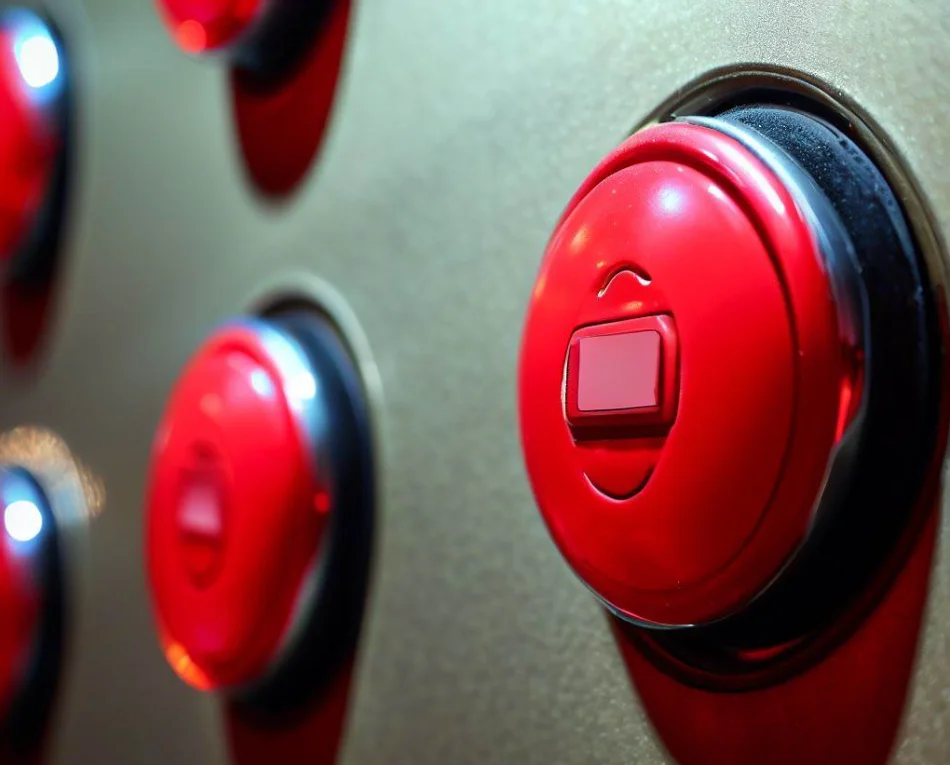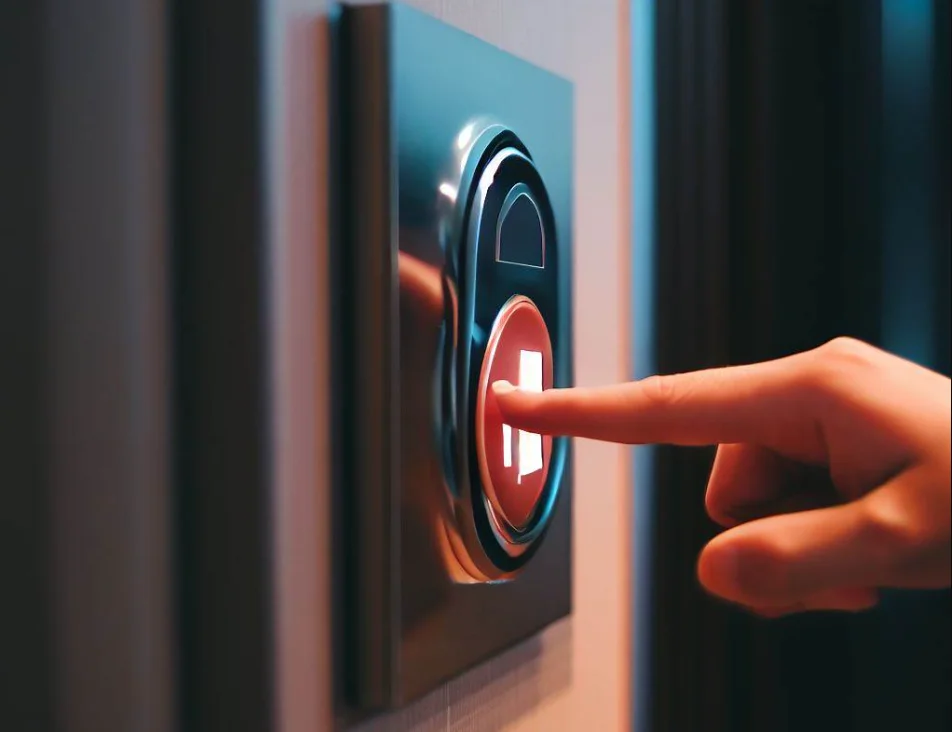In an emergency, every second counts. Wired alarm panic buttons provide a vital lifeline to instantly summon help at the push of a button.
Integrated into alarm systems for homes and businesses, these devices provide a direct connection to emergency services. Panic buttons have evolved from simplistic emergency call buttons into sophisticated smart sensors leveraging the latest security technology.
Understanding the basics of how wired panic buttons work sheds light on their life-saving capabilities. Examining the types available and ideal uses reveals why these devices are an essential component of comprehensive security for many homes and organizations. As panic buttons continue advancing, they promise to become even more responsive, providing protection and peace of mind.
Anatomy of Wired Panic Buttons: How They Work
At their core, wired panic buttons provide a way to covertly activate emergency alarms through security systems. Hardwired buttons connect back to the main alarm panel via low-voltage wiring.
Pushing the button closes the alarm system circuit, which signals the control panel to send an emergency alert as it would with any triggered sensor.

Wired buttons are designed for minimal components, using an unobtrusive button mounted in a small plastic housing connected to the alarm system wiring. Most contain two internal contacts, COM and NC (normally closed), that remain separated when not pressed.
Pressing the button closes the contact between COM and NC to complete the alarm control panel circuit and activate emergency response.
When pressed, the alarm panel receives the panic button’s signal and interprets it as a priority alarm event. The system then uses its communication channels to notify monitoring services and/or emergency responders per the programmed settings. This all happens in seconds, summoning urgent aid rapidly to the site.
Some systems allow programming specific response actions to different panic buttons. For example, a button by the front entry could notify the security provider to dispatch officers, while another in a back room alerts emergency medical responders. This customization allows tailoring the emergency activation to the exact need.
Who Can Benefit from Wired Panic Buttons?
Thanks to their quick responsiveness and flexible installation, wired panic buttons safeguard a wide range of environments. Here are some of the most common and impactful uses:
Commercial Spaces: In public-facing businesses like retail stores, hotels, and hospitals, staff may encounter threatening situations that require immediate backup. Discreet buttons installed at reception desks or under counters let employees covertly signal for urgent help during an escalating incident.
Banks: Tellers and office personnel who risk confronting robbers or disturbed individuals can use silently wired panic buttons to call for assistance. Near-instant police notification provides crucial response time in life-threatening bank incidents.

Campuses: Large facilities like corporate campuses, hospitals, and schools contain many isolated areas perfect for hardwired panic buttons. Security or medical teams receive immediate alerts of the specific location.
Home Security: Though less common in homes, families can employ panic buttons for emergency notifications. They allow children or disabled individuals to trigger alarms if unable to reach phones.
Silent or Audible Alerts
Wired panic buttons typically activate “silent” alarms by default, with no siren or other audible alert sounding when pressed. This helps avoid provoking or agitating threatening individuals in already tense situations.
Audible alerts can be set up as an alternate option when appropriate. Sirens may be preferred in campus settings, loudly sounding a warning if an incident occurs in one area so people can evacuate other buildings.
Another alternative is to combine with visual alerts, like flashing strobe lights. These grab attention and convey urgent alerts for occupants who are visually impaired or in noisy locations. Panic buttons can even integrate with other systems like intercoms to play pre-recorded warning messages when activated.
Location, Location, Location
Strategic placement is critical when installing wired panic buttons. The ideal locations allow individuals to easily access and activate the button, while also remaining subtle and out of sight from intruders or the public. Popular placements include:
- Under desks or counters
- Behind cabinets or shelves
- Near cash registers
- Inside drawers or cupboards
- On walls or non-obvious spots
- Near entrances or exits
Panic buttons should be positioned where individuals typically work or passage through, keeping buttons within arm’s reach. For home use, buttons located close to beds, favorite chairs, and other frequented areas allow fast access. The wiring can unobtrusively follow baseboard trim or molding to connect with the alarm system.
Advanced Features and Functions
With technology enhancements, today’s wired panic buttons offer capabilities exceeding a simple emergency button. Sensors can detect if the button is pressed continuously, like if someone is being held against their will. The system then escalates the alarm accordingly.
Integration with access control systems allows panic buttons to lock down doors and restrict access with just one press. This helps contain threats and prevent intruder entry to other areas.
Some systems even employ “smart” sensors that ID the specific button activated, allowing custom alerts. This allows tailoring response through buttons in a receptionist area versus an employee breakroom, for example.
Wired buttons are also available with protective button guards to prevent accidental triggers, or protective flip-up covers for discreet access. Anti-tamper sensors detect if the panic button is damaged or destroyed too. While still straightforward in operation, these sensors now pack intelligent features.
The Future of Wired Panic Buttons
Looking ahead, wired panic buttons are primed to become even more capable and effective for emergency alerts. Through technologies like mobile apps and simplified automation, we can expect features such as:
- Remote smartphone app controls to activate panic buttons from anywhere
- Integration with home automation systems, like flashing lights when pressed
- Direct communication to monitoring centers via two-way talk features
- Location tracking to identify exactly where alerts originate
- Streamlined connection with security and life safety systems
As homes and businesses utilize more smart home-enabled devices, the opportunities are endless for panic buttons to interface with these systems in providing intelligent, timely emergency response. With innovative advances on the horizon, wired panic buttons will continue their life-saving role in strategic emergency preparedness.
For those interested in installing wired panic buttons as part of their comprehensive security system, JET Hotel Solutions (https://www.jethotelsolutions.com/) offers high-quality devices and installation services. Their expert team can help select ideal wired button options and positions tailored to your environment.
By leveraging JET Hotel Solutions’ industry-leading products and support, you can equip your home or business with reliable wired panic buttons for instant emergency alerts when you need them most.

